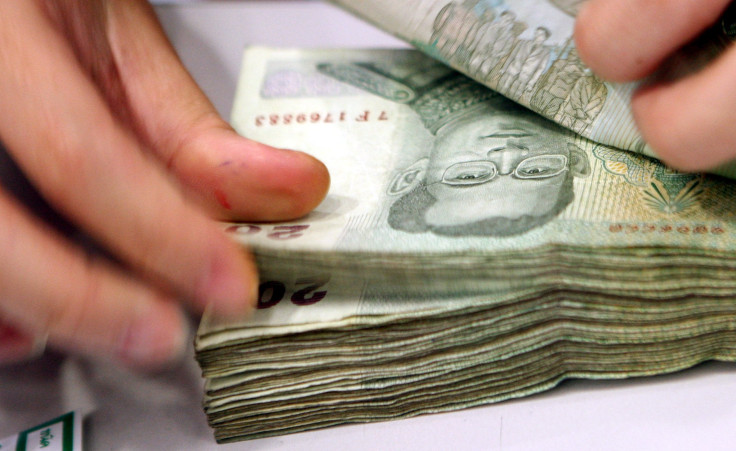Thailand’s Economy Slips Into Recession In Q2; Full-Year GDP Growth Forecast Trimmed; Central Bank Expected To Hold Rates Steady

Thailand's economy fell into recession during the three months ended in June amid weak exports and sluggish domestic demand, prompting the government's economic planning agency to further cut its growth forecast for this year. But worries over high household debt are likely to keep the central bank from cutting interest rates further when it meets this Wednesday.
The southeast Asian economy contracted 0.3 percent in the second quarter from the first, following a 1.7 percent decline in the first three months of the year, according to official data released on Monday. Most economists surveyed by Reuters had expected growth of 0.2 percent in the latest quarter. A recession is typically defined as two consecutive quarters of contraction in gross domestic product, or GDP.
Thailand, a major source of car and electrical appliance shipments, as well as one of the world’s biggest producers of rice, has been hurt by prolonged weakness in global demand. The U.S. market accounts for about 10 percent of Thailand’s total exports, while China and the rest of Asia together account for 48 percent.
Thai exports fell 1.4 percent from the previous quarter. And “with these regional economies still sluggish as a result of worries over less accommodative monetary policy in the U.S. and China, we expect Thailand’s export performance to remain sluggish in second half of this year,” said Usara Wilaipich, a senior economist at Standard Chartered Bank, in a note to clients.
As a result of the slump in exports, the nation's current account swung from a $1.3 billion surplus in the first quarter to a $5.1 billion deficit in the second quarter. Domestic consumption, which makes up about half of the economy, also weighed on growth, as the effects of fiscal stimulus measures brought in to help Thailand recover from severe flooding in 2011 faded.
“We do not expect much of a rebound in the second half of the year,” said Krystal Tan at Capital Economics in a note to clients. Tan pointed to several areas of concerns, including the decline in consumer confidence, which suggests the household sector is struggling and high household debt is likely cap household spending growth over the coming years.
Private investment growth is also expected to stay subdued. Weak demand has led to a fall in capacity utilization in recent quarters. Businesses operating with excess capacity are likely to put off investment outlays until the economic outlook improves.
Furthermore, delays in the implementation of the government’s planned investments are another reason to be pessimistic about Thailand’s growth this year. The draft bill for the government’s 2 trillion baht ($67.7 billion) -- or 18 percent of GDP -- infrastructure investment plan is stuck in parliament and a separate 350 billion baht water management plan has also been put on hold since June.
Barclays responded to Monday’s data by cutting its annual growth forecast for Thailand from 4.5 percent to 3.5 percent, while the country’s own planning agency trimmed its expectations to between 3.8 percent and 4.3 percent from a previous range of 4.2 percent to 5.2 percent. Economists in a Reuters poll last week forecast 2013 economic growth of 4.0 percent.
Despite expectations of a continuing moderation in economic activity, analysts think the Bank of Thailand (BOT) is still likely to stand pat when it meets this Wednesday. After an interest rate cut in May, the BOT’s monetary policy committee left the benchmark rate unchanged at 2.50 percent at its July meeting, citing high household debt as a concern.
Within Asia, some of the fastest accumulators of debt since the global financial crisis have been Thai households, going from under 55 percent of GDP at the beginning of 2009, to nearly 80 percent today, according to HSBC economist Su Sian Lim.
“We believe the costs of further rate cuts would outweigh the benefits,” Wilaipich said.
© Copyright IBTimes 2024. All rights reserved.





















